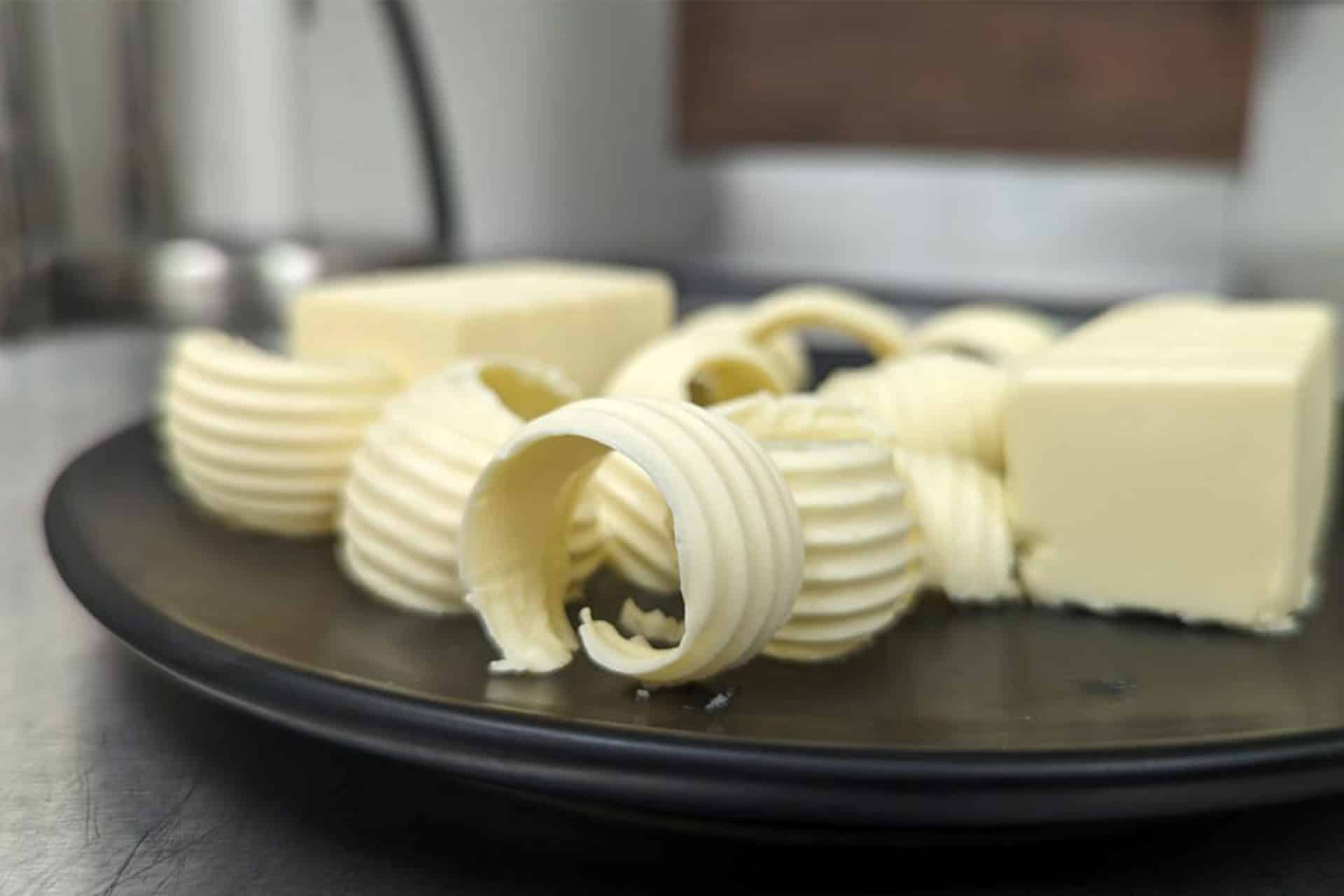A California-based startup called Savor has figured out a unique way to make a butter alternative that doesn’t involve livestock, plants, or even displacing land. Their butter is produced from synthetic fat made using carbon dioxide and hydrogen, and the best part is —- it tastes just like regular butter.



The biggest question which is barely alluded to in the article is cost. If it can’t compete with mass produced butter at cost and scale then it’ll just be another “alternative” which is good but not as big.
They also mention that they compared emissions and land use but give no aspect of what synthetic processes are used (I’d assume they at least have provisional patents on the “how to” already).
Take all the subsidies out of the dairy industry and see how competitively priced butter actually is.
Sounds like it’s not currently price competitive but it might be in the future. I expect economies of scale would be helpful too.
Could be subsidized as a “real” carbon offset. That could make it competitive with other butters. Assuming it’s actually legit.
It wouldn’t offset much, given the upper price for direct air capture here https://www.iea.org/commentaries/is-carbon-capture-too-expensive at a little under $350/ton, and assuming a pound of ‘butter’ comes entirely from CO2 (some will by hydrogen based on the article, but assuming that’s negligible) that means at most the credit should be 16¢ per pound, which is 3.4% of the average cost of a pound of butter ($4.69, https://fred.stlouisfed.org/series/APU0000FS1101). My cost of butter is below average and it’s still only a 4.5% subsidy.
Edit to add: if you count the CO2 production from obtaining the milk used for real butter against the cost as well (let’s assume the resources for this process and the process of making milk into butter are similar), it seems like producing a pound of butter is emits around 4 kg of CO2, which nets you another $1.4 on each package of butter (if you use the lower number for carbon capture this is a total of $0.6 including the pound of capture from above). This is actually pretty significant, so if there was a tax for greenhouse gas emissions to cover the cost of recapture it would help a product like this be more viable.
As if dairy fat isn’t subsidised already.
And? Whether it’s fair or not that is their competition.
With Gates, you know it’s going to be priced to be competitive and disruptive to the market.
Yeah, that’s always the thing with these technological solutions, you practically cannot compete with plants. They involve barely any work, nor machinery, for the output they deliver.
deleted by creator
Terroir is essential to any natural food product. The impurities are what make it good, not something which detracts from the whole.